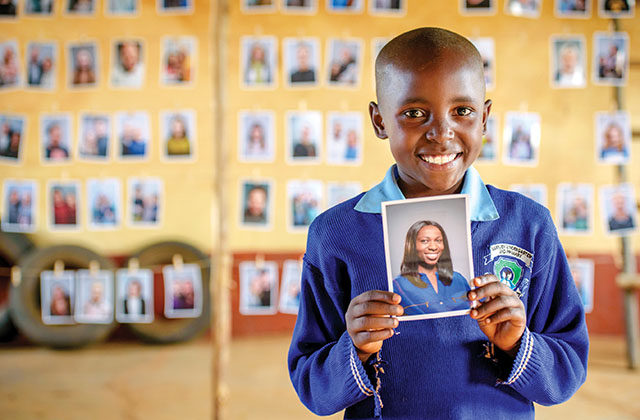
World Vision: Portrait of Mary Nzioki holding a picture of her sponsor. Courtesy Photo.
For the past 70 years, sponsors under Christian humanitarian organization World Vision have picked the child they want to support, but the Charity is launching a new initiative so Children can now choose their sponsor in a program called “Chosen.”
The organisation says this new development is a powerful switch at the beginning of the sponsorship relationship that recognises the dignity and value of children living in extreme poverty—and expresses their belief that children have the power to change their own lives and their communities.
“‘Chosen’ puts the power to choose their sponsor in the hands of the child,” World Vision International President and CEO, Andrew Morley said in a statement published Sept. 20, 2019.
According to the release, Chosen starts with people signing up to be chosen and getting their picture taken. That photo is sent to a community where World Vision works, to be displayed with the pictures of other potential sponsors. The community gathers for a celebration where the kids choose their sponsors. Soon thereafter, sponsors will receive a picture of the child holding their photo and a note letting them know about the child and what made the child choose them.
“Chosen introduces children to the first of many empowering choices they will now have through child sponsorship, so they can become agents of lasting change,” Andrew Morley said, “Our World Vision launch offices are already seeing God move in miraculous ways through Chosen.”
World Vision reports that in Kenya, the response was powerful as 431 children chose sponsors from a church in downtown Chicago, U.S.
Empowering people out of poverty has been at the heart of World Vision’s work around the world since the organization started in 1950. Through its efforts, World Vision has impacted the lives of more than 200 million vulnerable children by tackling the root causes of poverty.

